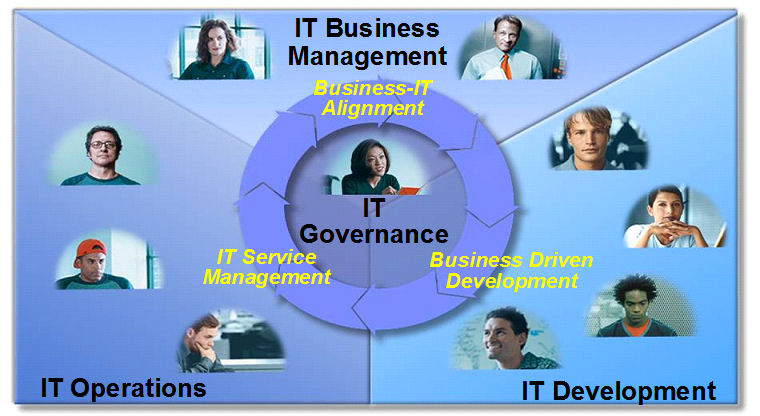| The Relationship Between RUP and ITUP |
 |
|
| Related Elements |
|---|
RUP and ITUP are reference models that emerged from different perspectives. These process frameworks are related in a number of ways but serve different purposes. The following diagram is a high-level model of IT. RUP primarily addresses IT Development, whereas ITUP provides most of its content in the areas of IT Operations, IT Business Management, and IT Governance. IT Development can be implemented by a variety of different SDLCs (system development life cycles). RUP is a very prominent SDLC, although other SDLCs may be used by an IT organization.
In addition, it is important to understand the difference between an IT service an a software application. An IT service is provided by a solution that may consist of many things, including:
Thus, a software application may just be one part of a solution that provides an IT service. The Rational Unified Process (RUP) was created to describe the processes involved in a software application development project. It emerged as a unification of various object-oriented software development processes. Software development projects occur as part of an IT organization, but may also occur in the product development side of a software development business. Within the scope of software development, RUP identifies all of the disciplines that are needed, which does not include a consideration of IT operations. The IBM® Tivoli® Unified Process (ITUP) was created to describe an IT organization implementing IT Service Management. The focus of ITUP is IT operations, but also includes processes for development (called Solution Development). The RUP Requirements, Analysis and Design, Implementation, and Testing disciplines may be used in place of those processes (see the table below). However, there are other RUP disciplines that, at first, seem to overlap ITUP processes. Both RUP and ITUP describe the following:
Although these may seem like direct overlaps at first, they differ because of the different contexts of these two cultures. In some instances, the overlaps are in name only. In other instances, the overlaps are in scope and context. The following sections will describe the specific differences in these areas.
|
| Supporting Materials |
|---|
©Copyright IBM Corp. 2005, 2008. All Rights Reserved. |
